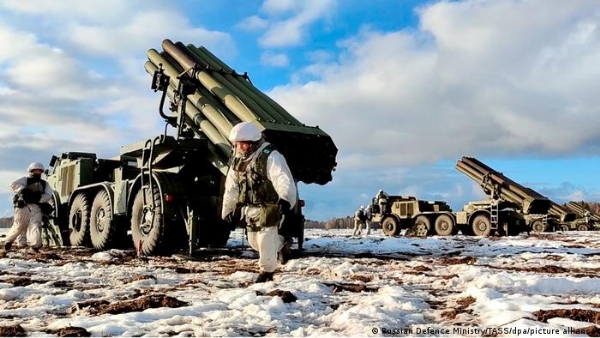Russia to invade Ukraine on 16th February?
The situation has been turning critical with Russia amassing troops at the Ukraine border and also sending troops to Belarus to exert pressure on Ukraine.
Total Views |
Washington D. C., Fe 14: The fears of a Russian invasion of Ukraine have been growing lately. This has led to a stand-off between Russia and the West.

The situation has been turning critical with Russia amassing troops at the Ukraine border and also sending troops to Belarus to exert pressure on Ukraine.
🚨 Russia may att@ck Ukraine on February 16: Biden
— OSINT Updates (@OsintUpdates) February 13, 2022
This has led to a war of words between both sides. Let’s witness the timeline of events in this issue. On November 10, NATO warns Moscow about taking "aggressive action" after the US reports unusual troop movements near the Ukrainian border.
Also Read: 'Russia may invade Ukraine any day': US warns Americans in Ukraine to leave within 48 hours
On December 7, US President Joe Biden threatens his Russian counterpart Vladimir Putin with "strong economic and other measures" if he invades Ukraine. On January 17, Russian troops begin arriving in ex-Soviet Belarus for military drills, which Moscow says are aimed at "thwarting external aggression".
On January 20, Biden says any incursion of Russian troops is "an invasion" after appearing to suggest a "minor" attack on Ukraine might invite a lesser response. On January 21, ex-Soviet NATO members Estonia, Latvia, and Lithuania say they will send anti-tank and anti-aircraft missiles to help Ukraine defend itself.
On January 22, Britain claims Moscow is "looking to install a pro-Russian leader in Kyiv" and occupy Ukraine, which Russia dismisses as "disinformation". On January 31, Moscow accuses the US of whipping up "hysteria" as Washington says 30,000 Russian troops will be deployed in Belarus near the Ukrainian border by early February.
On February 2, the US sends 3,000 troops to fortify NATO forces in Eastern Europe. On February 11, the White House tell Americans that leave Ukraine within 48 hours as a Russian attack could come at any time. On February 12, US President Joe Biden reportedly told the Western allies during a phone call that his Russian counterpart, Vladimir Putin, could launch an attack on Ukraine on February 16.


